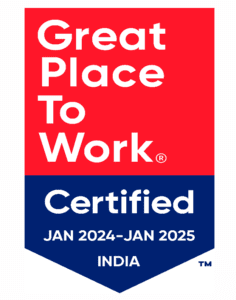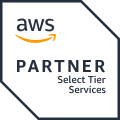The latest revision of ISO 27001, released on October 25, 2022, introduces several changes that aim to address evolving security challenges and ensure that information security management systems (ISMS) are more aligned with current technology, security threats, and organizational needs. Here we explore the key changes in ISO 27001:2022 and provide a strategic approach to ensure a seamless transition.
Understanding the Key Changes in ISO 27001:2022
ISO 27001:2022 brings several pivotal changes, particularly to Annex A, which has undergone a substantial reorganization. The number of controls has been reduced from 114 to 93 and restructured into four key areas: Organizational, People, Physical, and Technological. This streamlining aims to eliminate overlaps and repetitions, making the standard more concise and easier to implement.
- Annex A Controls Reorganization: The consolidation into four areas is a significant change. The new structure helps organizations better understand and implement the controls.
- New Controls: Eleven new controls have been added, including Threat Intelligence, Information Security for Cloud Services, ICT Readiness for Business Continuity, and more. These additions address modern challenges like cloud security and data protection.
- Mandatory Clauses Updates: Key clauses from 4 to 10 have undergone minor changes. These include Clause 4.2’s emphasis on understanding the needs and expectations of interested parties and Clause 6.3’s addition, requiring planned changes to the ISMS.
The changes in ISO 27001:2022 are not just about compliance but about embracing a culture of robust and proactive security measures, ensuring sustainable and secure business operations in the digital age.
Transition Strategy
Transitioning to ISO 27001:2022 requires careful planning, assessment, and implementation:
- Gap Analysis: Start with a thorough gap analysis to understand the differences between the 2013 and 2022 versions. Identify areas that need updates or complete overhauls in your current ISMS.
- Training and Awareness: Ensure that your team is aware of the changes. Conduct training sessions to update them on the new controls and clauses.
- Policy and Process Updates: Revise your existing policies and processes to align with the new requirements. Pay special attention to the newly added controls and how they impact your current security posture.
- Implementing New Controls: Plan for the implementation of new controls, especially those related to cloud security, data leakage prevention, and threat intelligence. This may require new tools or changes to existing systems.
- Internal Audits: Conduct internal audits to validate the effectiveness of the implemented changes. Address any non-conformities identified during these audits.
- Documentation: Update your documentation to reflect the changes made. This includes your Statement of Applicability, risk assessment and treatment documents, and other essential records.
- Engagement with Certifying Bodies: Work closely with certifying bodies for a smooth transition. They can provide insights and recommendations for compliance with the new standard.
Best Practices for a Smooth Transition
- Early Adoption: Begin the transition process early to avoid last-minute challenges. Familiarize yourself with the new standard, focus on revised clauses and new controls.
- Stakeholder Engagement: Ensure that all stakeholders are involved in the transition process. Their input can provide valuable insights and aid in smoother implementation.
- Continuous Improvement: View the transition as an opportunity for continuous improvement. Use this as a chance to strengthen your security posture and address any existing gaps.
- Leverage Technology: Utilize GRC platforms and other technological solutions to streamline the transition process. These tools can aid in managing documentation, monitoring compliance, and conducting risk assessments.
Conclusion
This update is more than just a regulatory change – it pivots organizations towards a more robust and responsive cybersecurity approach. Adopting ISO 27001:2022 is a journey demanding careful planning and understanding of today’s complex security landscape.
ISO 27001:2022 brings thoughtful changes, especially in Annex A. This reflects growing threats and the increasing importance of areas like cloud security, data privacy, and advanced threat detection. By embracing these changes, organizations are not just complying with a standard; they are strengthening defenses against sophisticated cyber threats.
Implementing ISO 27001:2022 requires a multi-step approach. First, meticulously evaluate existing security measures against the new framework – this is a strategic opportunity to enhance resilience. Next, comprehensively review policies, processes and practices while providing robust training to align personnel with new requirements. Adoption extends beyond the IT department, requiring company-wide collaboration for a cohesive security strategy. This holistic involvement not only ensures compliance, but embeds a culture of security mindfulness and proactive risk management throughout the business.
As the deadline for compliance nears, it’s vital to view ISO 27001:2022 not as a checkbox exercise, but an opportunity to build resilience and trust, while engaging a wider net of stakeholders.
Begin your transition to ISO 27001:2022 today. Assess your current ISMS, plan the necessary changes, and engage with experts for a seamless shift. Remember, the goal is not just to comply with a standard but to establish a robust, resilient, and responsive information security framework.
Mandatory Clauses
- Clause 4.2: Added item (c) requiring analysis of interested party requirements that must be addressed through the Information Security Management System (ISMS).
- Clause 4.4: Added a phrase requiring planning for processes and their interactions as part of the ISMS.
- Clause 5.3: Clarified that communication of roles is done internally within the organization.
- Clause 6.2: Added item (d) requiring monitoring of objectives.
- Clause 6.3 (New): Any change in the ISMS needs to be carried out in a planned manner.
- Clause 7.4: Deleted item (e) that required setting up processes for communication.
- Clause 8.1: Added new requirements for establishing criteria for security processes.
- Clause 9.3: New item 9.3.2 c) added, clarifying that inputs from interested parties need to be about their needs and expectations, relevant to the ISMS.
- Clause 10: Reorganization of subclauses, with Continual improvement now listed first.
New Controls in Annex A
| Control | Description | Goal / Outcome |
| A.5.7 | Threat Intelligence | Actively collect, analyze, and disseminate threat information to inform security decisions and proactively mitigate risks. |
| A.5.23 | Information Security for Cloud Services | Establish security requirements for the acquisition, use, management, and termination of cloud services. |
| A.5.30 | ICT Readiness for Business Continuity | Ensure ICT infrastructure and procedures are prepared to maintain essential operations during service disruptions. |
| A.7.4 | Physical Security Monitoring | Establish controls to monitor and control access to sensitive physical areas containing information assets. |
| A.8.9 | Configuration Management | Define, implement, maintain, and review security settings for systems and applications to ensure appropriate configurations. |
| A.8.10 | Information Deletion | Securely dispose of information assets no longer required to be retained in accordance with legal and regulatory requirements. |
| A.8.11 | Data Masking | Apply techniques like pseudonymization or anonymization to protect sensitive data while preserving its usability. |
| A.8.12 | Data Leakage Prevention | Implement controls to prevent unauthorized transmission of sensitive information outside the organization. |
| A.8.16 | Monitoring Activities | Monitor user activity and system operations to detect potential security incidents and ensure compliance with security policies. |
| A.8.23 | Web Filtering | Restrict access to harmful or unauthorized online content to protect users and systems from cyber threats. |
| A.8.28 | Secure Coding | Integrate security practices throughout the software development lifecycle to build secure and resilient applications. |


